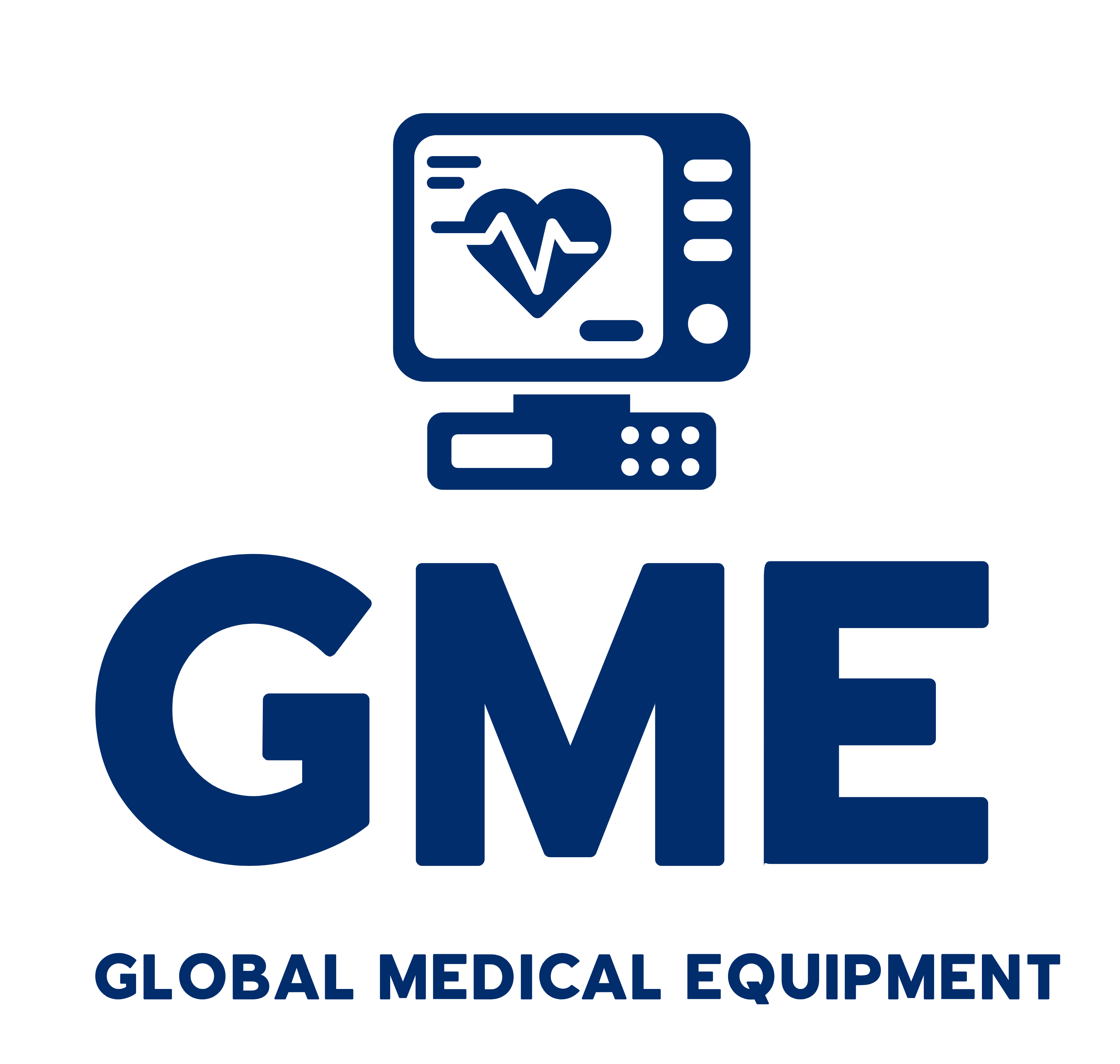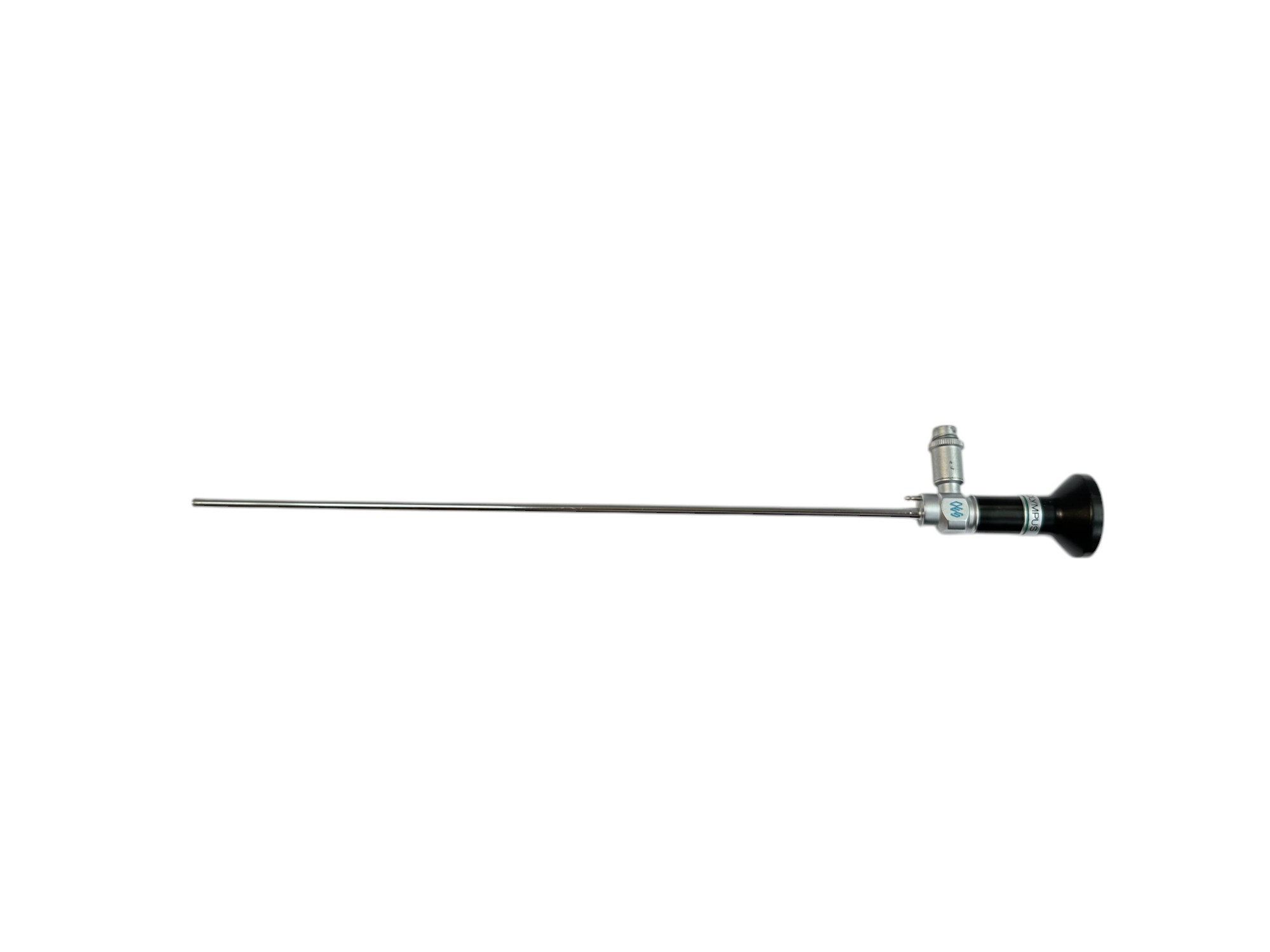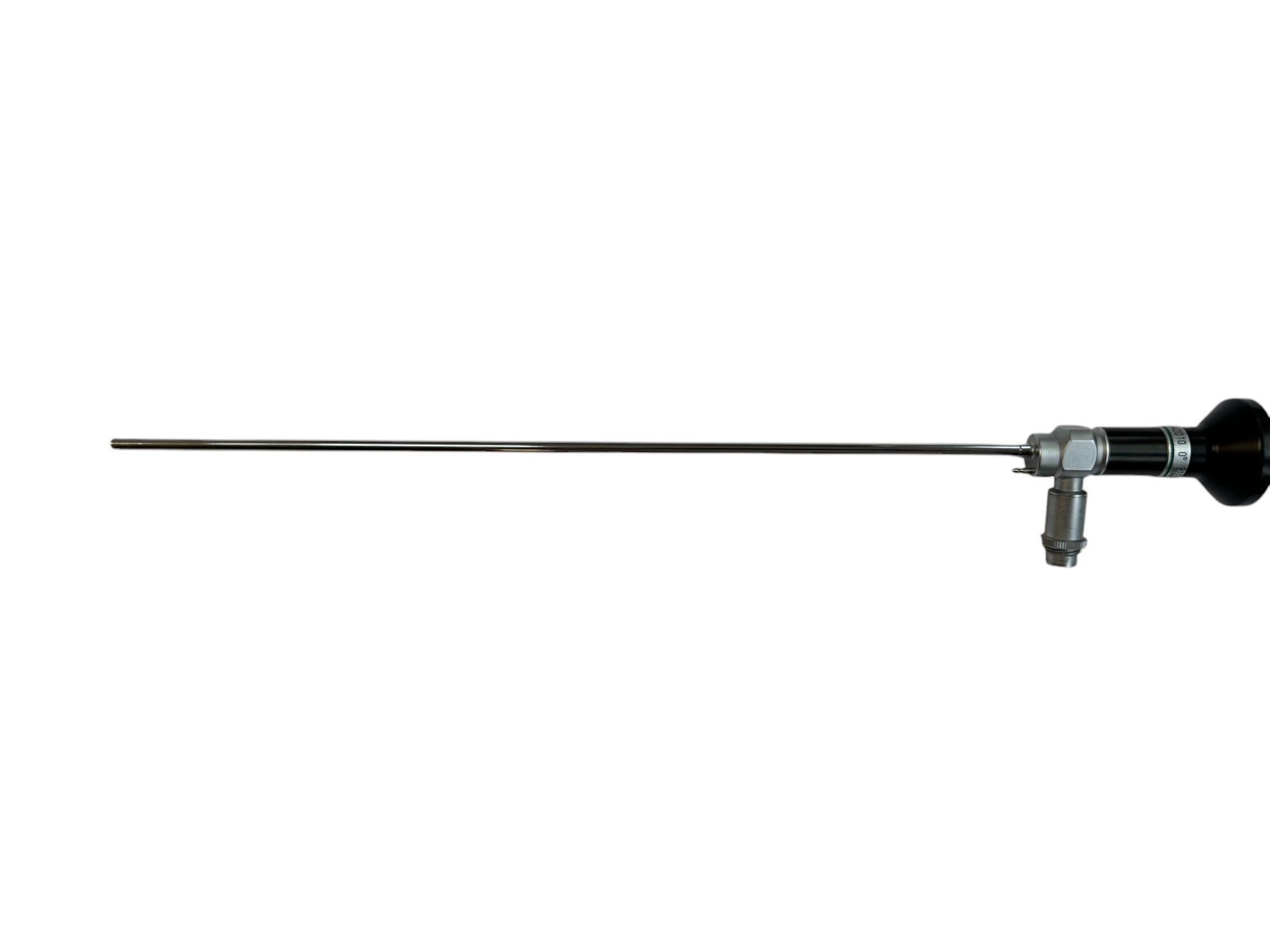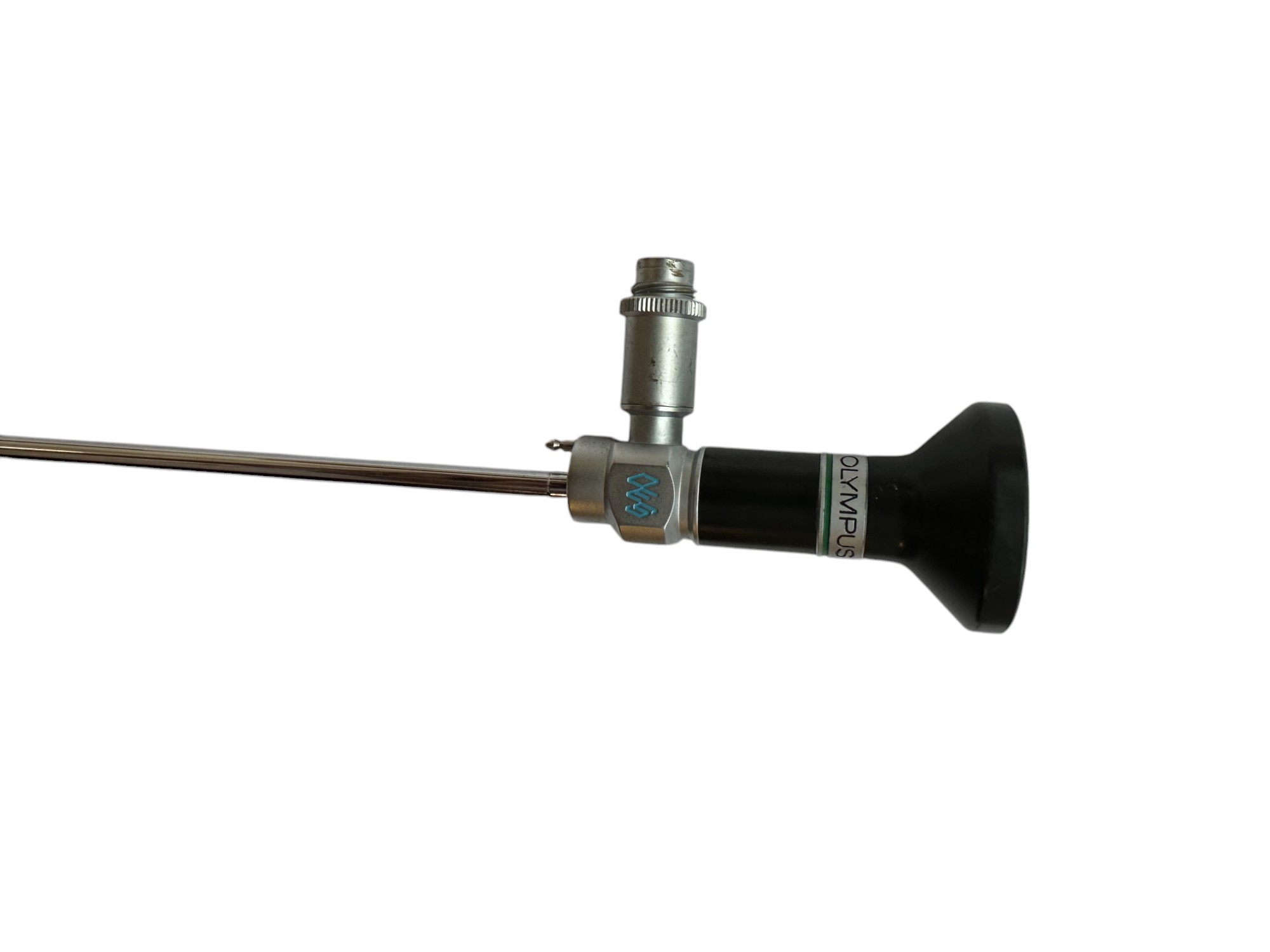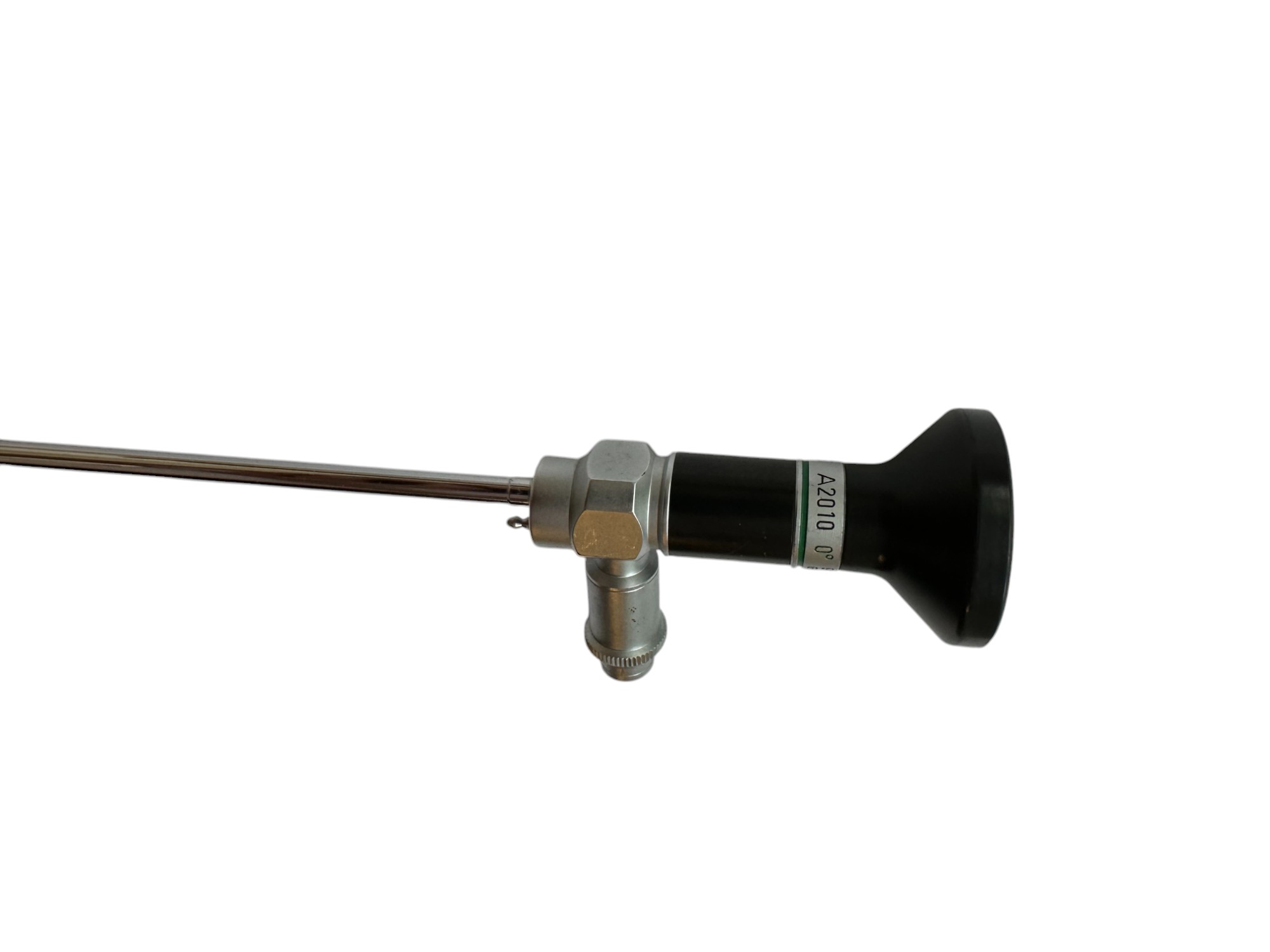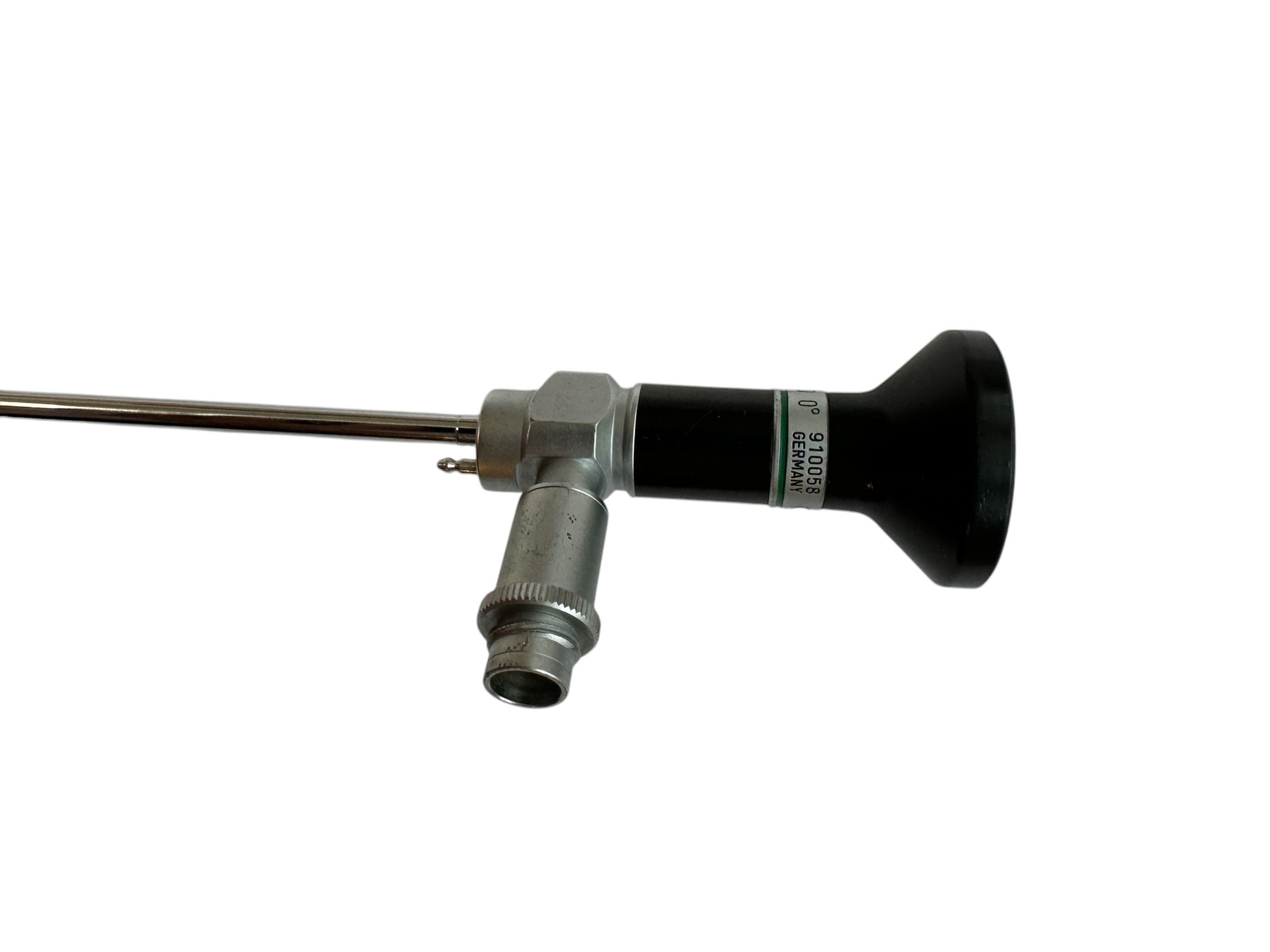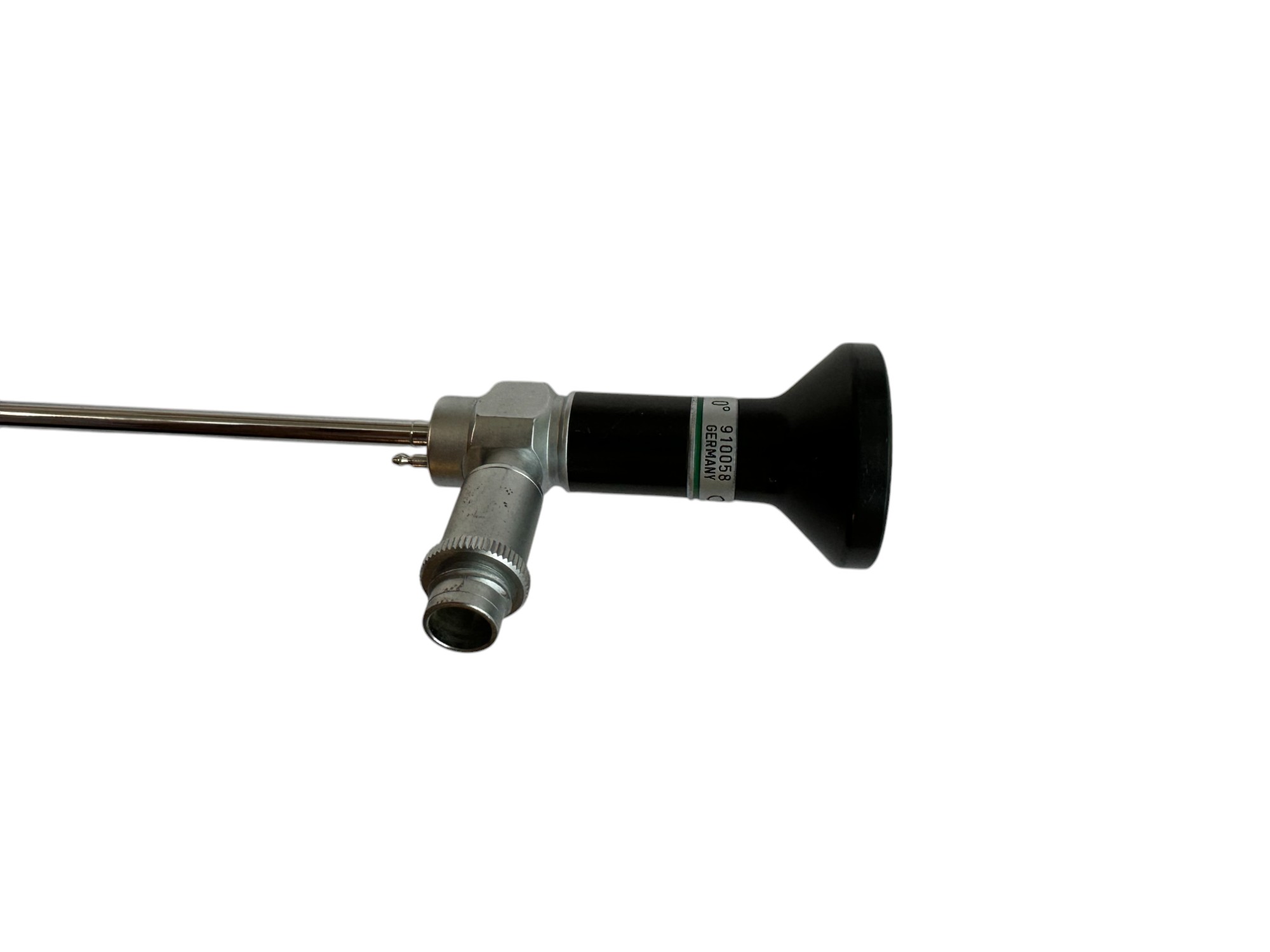£208.33 Excluding VAT
OLYMPUS A2010 0° Rigid Cystoscope – Pre-Owned, Clear Optics, Tested
Pre-owned Olympus A2010 0 Degree Cystoscope
The Olympus A2010 0 Degree Cystoscope is a high-quality medical instrument used primarily for cystoscopy procedures. Cystoscopy is a diagnostic and therapeutic procedure used to examine the bladder and urethra. The A2010 model from Olympus is part of their well-known line of endoscopic equipment, designed to provide superior visualization of the lower urinary tract. The 0-degree angle lens in the A2010 cystoscope allows for clear, straight-ahead viewing, making it ideal for certain types of urological procedures.
Key Features and Specifications of the Olympus A2010 0 Degree Cystoscope:
- 0-Degree Lens:
- The 0-degree lens allows for direct, straight-ahead visualization, which is ideal for examining the bladder, urethra, and lower urinary tract. This is the most common type of cystoscope used for basic diagnostic cystoscopy.
- The 0-degree lens provides a clear view of the anatomy, with minimal distortion, making it excellent for routine bladder exams and diagnosis of conditions like bladder cancer, urinary tract infections (UTIs), stones, and urethral strictures.
- High-Definition Optics:
- Olympus cystoscopes, including the A2010, are known for their superior optics, providing bright, clear images. The high-definition imaging is especially important in urological procedures where precision is essential.
- The optical system ensures that even fine details, such as small polyps, inflammation, or lesions, are clearly visible for accurate diagnosis.
- Ergonomic Design:
- The Olympus A2010 Cystoscope is designed with ergonomics in mind. It is lightweight and easy to handle, ensuring that urologists can perform procedures with precision and comfort.
- Its design allows for easy maneuverability within the urethra and bladder, which is especially important during diagnostic cystoscopies and biopsy procedures.
- Distal End Design:
- The distal end of the cystoscope is compact and smooth, making it easier to insert into the urethra with minimal discomfort to the patient.
- The tip is designed to be gentle, which is important for reducing trauma during the procedure, particularly for patients with strictures or sensitive anatomy.
- Compatibility:
- The A2010 cystoscope is designed to be compatible with a range of Olympus video systems and light sources, including the Olympus CV-180/190 video systems and light sources such as the CLV-180.
- It also integrates with various endoscopic instruments, including biopsy forceps, laser fibers, and electrosurgical devices, allowing the cystoscope to be used for both diagnostic and therapeutic procedures.
- Autoclavable for Sterilization:
- The Olympus A2010 cystoscope is made from high-quality, durable materials that allow it to be autoclavable, ensuring it can be safely sterilized between uses to prevent cross-contamination and ensure patient safety.
- The design is specifically intended for ease of cleaning and maintenance, ensuring long-term use in busy medical environments.
- Applications:
- Diagnostic Cystoscopy: Used to examine the bladder, urethra, and urinary tract for abnormalities such as tumors, stones, infections, or inflammatory conditions.
- Bladder Cancer Detection: Important for visualizing tumors in the bladder and taking biopsies for pathology.
- Investigation of Hematuria: Used to investigate the cause of blood in the urine (hematuria), which can result from a variety of conditions, including bladder cancer or urinary tract stones.
- Urethral Strictures: Helps diagnose and assess narrowing or scarring of the urethra.
- Urinary Tract Stones: Used to visualize and sometimes remove stones from the bladder or lower urinary tract.
- Bladder Biopsy and Laser Treatments: The cystoscope is compatible with biopsy forceps and laser fibers, allowing for therapeutic procedures like bladder tumor resection or stone fragmentation.
- Image Clarity and Precision:
- Olympus is known for their advanced fiber-optic technology, and the A2010 cystoscope continues this tradition by providing bright, high-resolution imaging for clear visualization of the bladder and urinary tract.
- Edge-enhanced imaging makes it easier to identify subtle lesions, tumors, or other abnormalities during the procedure.
Advantages of the Olympus A2010 0 Degree Cystoscope:
- Excellent Visualization:
- The high-definition optics provide clear, detailed images of the bladder and urethra, making it easier to identify pathology, including small tumors or lesions.
- Minimally Invasive:
- The narrow design of the cystoscope reduces trauma during insertion and minimizes discomfort for the patient, making it ideal for outpatient settings or office-based cystoscopies.
- Durability:
- Olympus cystoscopes, including the A2010 model, are made from high-quality materials that are built to withstand repeated use and sterilization cycles.
- The robust construction of the cystoscope ensures that it remains reliable and maintains image quality over time.
- Comfort for the Patient:
- The smooth, rounded tip and ergonomic design make the procedure more comfortable for the patient, reducing the risk of injury and increasing patient tolerance.
- Compatibility with Various Accessories:
- The Olympus A2010 cystoscope can be used with various urological instruments, including biopsy forceps, electrosurgical tools, and laser fibers, making it suitable for a wide range of diagnostic and therapeutic procedures.
Common Procedures Using the Olympus A2010 0 Degree Cystoscope:
- Bladder Examination:
- Routine cystoscopy for the evaluation of bladder symptoms, including painful urination, frequent urination, or blood in the urine (hematuria).
- Bladder Cancer Detection:
- Detection of bladder tumors through visual examination of the bladder wall and urethra. The cystoscope allows for biopsy and tumor resection.
- Urinary Tract Stone Removal:
- Cystoscopy can be used to identify stones in the bladder or urethra and can sometimes be used to remove small stones or fragment larger ones with the appropriate instruments.
- Urethral Stricture Treatment:
- Diagnosis and dilatation of urethral strictures (narrowing of the urethra), which can cause difficulty urinating.
- Post-Surgical Evaluation:
- Used to monitor patients after prostate surgery or bladder surgery to ensure there are no complications such as infections, bladder stones, or recurrence of tumors.
£208.33 Excluding VAT
Related products
Karl Storz 26105BA 30 Degree Cystoscope – NO Image
£125.00 Excluding VAT
Karl Storz Image 1 HD Endoscopy Stack — Complete System
Laser NuvoLas 8W YAG Laser V2.9 with Footswitch
Olympus A2010 0 Degree Cystoscope
Quick Links
Get in touch
- Unit 10A Stanley House Stanley Avenue Wembley HA0 4JB
- +44 7921 398 890 (Call or WhatsApp)
- info@gmeltd.co.uk
- VAT : 4540 19213
